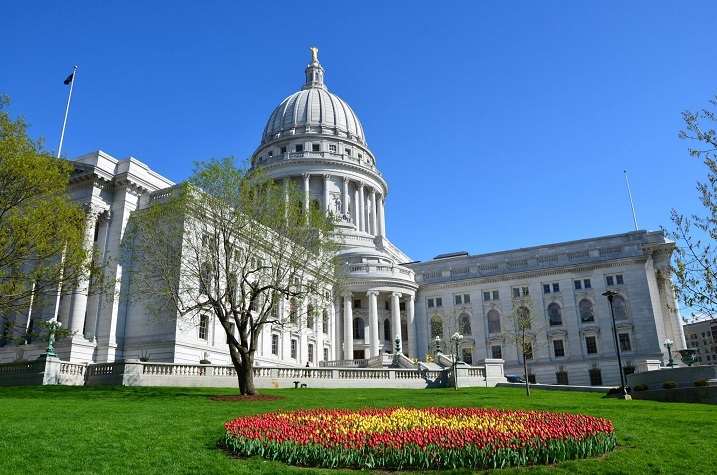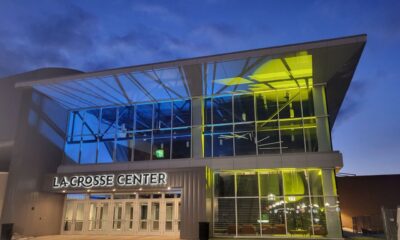National
Emails show businesses held sway over state reopening plans

As South Carolina Gov. Henry McMaster prepared to announce the end of a coronavirus stay-at-home order, his top staff received an email from the state health department.
The message, highlighted in bold, was clear: Wait longer before allowing customers back inside restaurants, hair salons and other businesses where people will be in close contact.
Instead, McMaster pressed ahead with a plan written by the state restaurant association to resume inside dining on May 11. The guidelines made masks optional for employees and allowed more customers inside than the health agency had advised.
A few days later, the Republican governor opened the doors to salons, fitness centers and swimming pools. He did not wait to gauge the effect of the restaurant reopening on the virus, as public health officials had suggested. Like many states, South Carolina later experienced a surge in infections that forced McMaster to dial back his reopening plan.
He was hardly alone. Thousands of pages of emails provided to The Associated Press under open-records laws show that governors across the U.S. were inundated with reopening advice from a wide range of industries — from campgrounds in New Hampshire to car washes in Washington. Some governors put economic interests ahead of public health guidance, and certain businesses were allowed to write the rules that would govern their own operations.
As job losses accelerated, the pressure to reopen intensified.
“Attraction folks are on me like white on rice,” McMaster’s tourism director wrote to the head of the governor’s reopening task force, describing lobbying from amusement parks, bingo halls and other entertainment venues.
Though governors often work with business leaders to craft policy, the emails offer a new window into their decisions during a critical early juncture in the nation’s battle against the pandemic. Many governors chose to reopen before their states met all the nationally recommended health guidelines, which include a sustained downward rate of infection and robust testing and contact tracing.
“The interest in trying to reopen and restart economic activity had a much greater pull at the time … than did public health concerns or question marks about how it would go,” said Anita Cicero, deputy director of the Johns Hopkins University Center for Health Security.
Many states were forced to halt or roll back their reopening plans as COVID-19 cases spiked across the country this summer, and the number of infections and deaths in the U.S. far outpaced those of any other country.
In early August, McMaster transformed his restaurant guidelines into requirements, including a mandate that all diners and employees wear masks. The governor’s spokesman, Brian Symmes, said “some restaurants weren’t doing what they needed to do.”
Symmes also defended the spring reopening, saying the governor “has a wider scope of responsibility and focus than our public health officials.”
“It simply isn’t the government’s job to put its thumb on the scale by shuttering these small businesses for an undefined and indefinite period of time,” Symmes said.
Two weeks after North Dakota reopened, Republican Gov. Doug Burgum received a report showing a single-day spike of 69 new COVID-19 cases in one county. Burgum fired off an email to several of his top officials complaining that the outbreak — combined with lower-than-promised daily COVID-19 testing — was “driving our state numbers in the wrong direction.”
“Our house is on fire,” Burgum wrote, accompanied by a fire emoji. “Need to drive a much greater sense of urgency and action.”
North Dakota was among at least 15 states that provided records to the AP at no cost. A few states wanted hundreds or thousands of dollars to supply copies of the communications that could reveal how governors were making decisions — and which voices influenced them the most.
Some states suspended or slowed responses to open-records requests because of the coronavirus. Three months after submitting its request, the AP is still awaiting records from many states, including Texas and Florida, which have some of the highest numbers of confirmed COVID-19 cases. California denied the AP’s request, because state law shields correspondence involving the governor’s office from public disclosure.
“In a pandemic, you need more transparency, more information — not less of either one of those,” said Dan Bevarly, executive director of the National Freedom of Information Coalition.
As she was putting the finishing touches on a reopening plan in May, Oregon Gov. Kate Brown received a letter from a coalition of business groups pressing for more say in the process. Two hours later, the head of the state hospital association wrote urging the Democrat to mandate masks as “foundational to any business opening where people will be gathered, indoors or out.”
At first, Brown required masks only for employees of certain businesses, but she had to reverse course as COVID-19 cases rose over the summer. She became one of 34 governors to impose statewide mask mandates.
In Washington state, landscapers, dog walkers and car wash operators all had a role in the rules affecting their businesses, according to the emails provided by Democratic Gov. Jay Inslee’s administration.
Lance Odermat, vice president of Brown Bear Car Wash in Seattle, said he was frustrated that car washes were not exempt from Inslee’s order shutting down many businesses in March. But Odermat continued to plead his case. He was included in a car-wash reopening group and sent the administration the company’s internal plan for reopening with coronavirus precautions.
When the governor released his reopening strategy, “it seemed like a lot of those guidelines were taken directly from our operating plan,” Odermat said.
In North Carolina, the head of a restaurant association sent a copy of the group’s reopening plan to Democratic Gov. Roy Cooper’s chief of staff on April 24 and warned in a letter the following week that the outlook for restaurants “becomes more dire” with each passing day. She also served on a state task force that helped shape the guidelines Cooper eventually issued, which allowed in-person dining to resume with up to 50% of fire-code capacity and tables spaced at least 6 feet apart.
The tensions between economic and health interests were evident in New Hampshire in a decision allowing campgrounds to open with restricted capacities.
Margaret Byrnes, executive director of the New Hampshire Municipal Association, urged Republican Gov. Chris Sununu’s administration to keep campgrounds closed because of concerns they could attract visitors from areas with higher coronavirus caseloads. She also wanted cities to have a greater voice on the governor’s reopening task force.
“There was a lot of business and industry representation, which is really important in the reopening process, but it needed to be balanced with some local municipal representation,” Byrnes said.
Sununu’s policy director, D.J. Bettencourt, said municipalities were represented on the task force through lawmakers who doubled as local officials. He said opening campgrounds on May 1 was “an essential aspect of ensuring housing” for some health care workers and guarding against homelessness.
Back in South Carolina, the director of the state Department of Parks, Recreation and Tourism said in an April 27 email that he had asked the restaurant association to “create a plan for the ‘new dining room’” guidelines. The association proposed to resume indoor dining May 11, according to the email.
On May 1, the health department chief of staff emailed the governor’s top staff saying the agency recommended waiting until May 18 to resume indoor dining. The agency also recommended a 25% capacity limit for restaurants, with no more than six people per table and mandatory masks for employees.
But the governor’s final plan, announced a week later, stuck with the May 11 start date, a 50% capacity guideline and up to eight people per table. There were no mandates, and the entire policy was only a suggestion.
How closely did McMaster’s restaurant guidelines mirror the industry’s plan?
“Oh, it was exactly,” said Douglas OFlaherty, vice president of the restaurant organization. “He basically said, ‘What the South Carolina Restaurant and Lodging Association’s recommendations are, you should follow.’”
——
Follow David A. Lieb on Twitter: www.twitter.com/DavidALiebI






